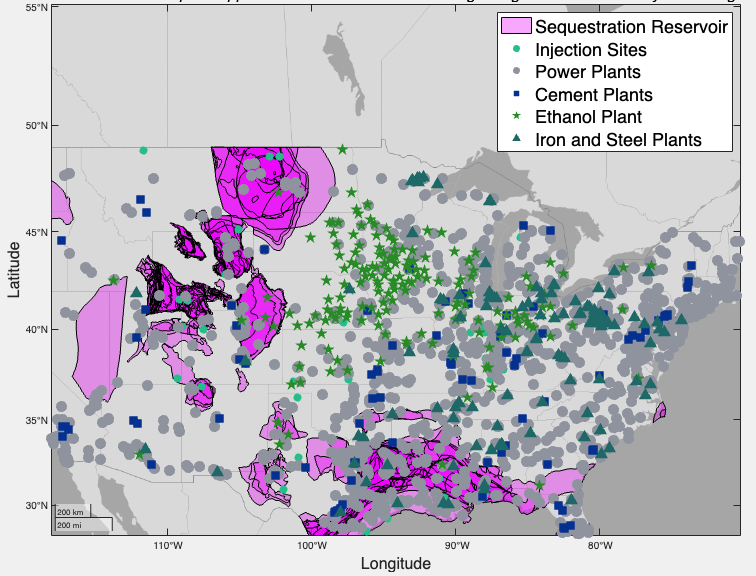Collaborative and Dynamic Development Leads to Interactive Geospatial Mapping Tool that Effectively Informs Strategic Decision-Making
March 21, 2025

Snapshot of the MCSC’s Interactive Geospatial Mapping Tool.
As extreme weather events become more frequent and damaging due to climate change, comprehensive resilience planning at the industry level is necessary to mitigate negative impacts on value chains. Current resilience tools can be exclusionary to non-academic audiences, limiting widespread adoption in corporate sectors. To tackle this challenge, as well as other challenges surrounding currently available tools, MIT researchers Sydney Sroka (MCSC Impact Fellow at the time) and Leela Velautham (Research Scientist) worked together to create an interactive geospatial mapping tool. Sydney led the development of the mapping tool itself, while Leela led the analysis of feedback to determine how companies think about roadblocks to resilience, and how a mapping tool can help overcome them. The tool captures the key components of technical, environmental, and social categories to provide companies with a comprehensive view of factors and barriers to consider when creating resilience and decarbonization plans.

The value of the mapping tool extends beyond its decision support functionalities. The process of iterating with the companies and collecting their feedback helped identify data gaps that, if bridged, would enable multiple sectors to chart out more comprehensive and robust paths forward. In a new article entitled “Co-constructing an Interactive Tool to Support Climate Change Resilience Planning in Industry,” published in Climate Resilience and Sustainability, the team outlines the collaborative and dynamic process of the tool’s development. It is co-authored by Sydney and Leela, and Yale PhD student Abigail Idiculla, who worked with the MCSC as an undergraduate through the MIT Summer Research Program. The article shares details about the interviews with industry professionals concerning resilience planning, as well as the outcomes from focus groups and individual meetings with stakeholders to document the tool’s impact.
They found that the tool helps improve several aspects of workflows and inform multifaceted strategic decision-making, highlighting the value of collaborations between industry and academia. Read more about the results in the new article.
